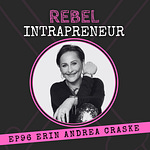Rebel Intrapreneurs use the Strategyzer Business Model Canvas FigJam template to turn possibilities into plans. Learn about the business model canvas FigJam template here and Try FigJam for free: https://psxid.figma.com/d8auy7
Jason Lemkin posted about BambooHR's survey, saying employee happiness is at a three-year low. BambooHR even called it, “The Great Gloom.” The Great Gloom? Thanks for the pep talk, sunshine. Is it really that bad, or just a tiny dip in a bigger upward trend? And seriously, what even is employee happiness, and does it really matter for a company's performance? I mean, people don't quit their jobs the minute they're unhappy, right? On the other hand, layoffs, stress, and pressure from higher-ups can certainly lead to anxiety and all that.
So, I dug a bit deeper. Checked out a few reports—BambooHR, Gallup, and the Conference Board. Turns out, they all tell slightly different stories about 2023. A mixed bag.
Now, here's the real question for rebel intrapreneurs: What can we do with this info?
I ask that question because I don’t accept The Great Gloom. I know that Rebel Intrapreneurs have enough agency in our spheres of influence that we can make a difference.
Cracking the Employee Engagement Code with Agency
First off, Quantum Workplace developed a cool model with six key drivers of employee engagement.
These are:
The leaders of their organization are committed to making it a great place to work.
Trust in the leaders of the organization to set the right course.
The belief that the organization will be successful in the future.
Understanding of how I fit into the organization’s future plans.
The leaders of the organization value people as their most important resource.
The organization makes investments to make employees more successful.
And they can be boiled down into two categories: "I trust leadership" and "Leadership cares about me." Nice and simple.
Let’s look at each and how Rebel Intrapreneurs can use them to maximize employee engagement.
My belief in leadership
Three of the drivers of employee engagement are about whether, and to what degree, employees believe in leadership’s ability to “steer the ship” successfully. In the context of Maslow’s Hierarchy of Needs, people want to know they have a place to live and pay their bills and have a base level of safety and security. If leaders understand and respect these needs, then leaders also know that part of addressing those needs is to persuade people to believe that the organization will be successful.
Knowing this, let’s look at three of the key drivers of employee engagement together:
The leaders of their organization are committed to making it a great place to work.
Trust in the leaders of the organization to set the right course.
Belief that the organization will be successful in the future.
Notice how these drivers are about employee expectations for how the leadership team should act. People want to believe in the mission and the ability of leadership to make progress towards that mission. Pay attention rebel Intrapreneurs, this is on us. We must go beyond the superficial employee engagement tropes, and be conscious of how we instill confidence in our people that we know what we are doing, even when we don’t have all the answers.
OK, so how?
Quantum Workplace did some research on best practices for improving employee engagement that leadership teams should put into practice. These are:
Inspire committed and aligned leaders
Prioritize regular communications with employees
Let’s talk about each
First: Inspire committed and aligned leaders
It all starts with leadership. Of course that means the leadership / Exec team. But we rebel intrapreneurs can lead by example too. When you want to implement or communicate anything throughout your organization, we have to involve other leaders. We cannot skip layers of people. Going through managers is how we scale anything in our organizations. You must prioritize communications with managers by communicating with them first.
If you want to inspire committed and aligned leaders, you must show your managers respect and say to them, “You are important to this organization and we value your participation, which is why we are telling you first.” You want to give managers the opportunity to seek clarity about “why” this message or decision or program or initiative is happening. Managers must understand “why” so they can communicate most effectively with their teams. Give managers the opportunity to ask why, and to ask follow up questions, until they are “committed and aligned.”
The next thing to do with managers is to seek their input and hear them out about challenges and possible changes to the message, decision, or program. You might make changes with their input. If you don’t make changes, you can reiterate the “why,” which helps managers understand the reasoning so that if they don’t agree with the decision, they know why the decision was made and they have the tools to communicate with their teams.
When you do this, managers will have what they need to carry out cascading messages to their teams.
Prioritizing and involving managers is how you scale messages, decisions, and programs throughout your organization.
Even though I use the term manager, rebel intrapreneurs can apply this to any leader on the team. High performing individual contributors and other influential people. Include them first. Get them onboard. Make them feel included and heard. Give them a chance to question things. So they can process the information and get on board.
If you go from decision to announcing, you skip this vital step and risk your announcement falling flat, being ignored, or even downright sabotaged.
So, inspire committed and aligned leaders.
The next one is:
Prioritize regular communications with employees
Once you have inspired committed and aligned leaders by prioritizing your managers, you must still ensure there is a culture of consistent and ongoing communications with employees. Quantum Workplace suggests many ideas for how to do this, but the overall point is to use all communications channels at your disposal and do so frequently.
Although you should communicate with managers first and empower them to cascade communications to their teams, your communications job has just begun. Employees should see the c-suite communicate frequently across the entire organization, not to replace or override what the managers are communicating, but to support what the managers are communicating.
Your leadership team should continuously share information that shows progress, results, and status of decisions and programs that are priorities in the company. If your employees want to feel confident that you are steering the ship in the right direction, you must share progress.
Share.
Share.
Share.
Employees are watching, and they are looking for your ability to lead a successful company. If you want engaged employees, you must help people believe the company is making progress towards the company mission.
My belief they care about me
Let’s look at the second category: the leadership team cares about me. Engaged employees not only need to believe the company is going in the right direction, but that the company (leadership in particular) actually cares about them.
Look at these three drivers:
Understanding of how I fit into the organization’s future plans.
The leaders of the organization value people as their most important resource.
The organization makes investments to make employees more successful.
Let’s talk about some ideas for how to ensure our people that we actually care about them.
Encourage and support people on making progress and link it back to organization's future plans
People want to feel a sense of belonging and to know that the work they do is valued and makes a contribution. Exceptional leaders (that’s you rebel intrapreneurs) help people believe how their work matters. So, it’s not enough to set a clear vision for the company (or your team) and ask people to “get on board.” Leadership teams need to acknowledge when people are “getting on board.” The more visible these acknowledgements are, the better. We should catch people doing something positive and acknowledge it.
Every rebel intrapreneur should have a daily practice of writing ten meaningful comments on people’s posts in Slack or Workplace or Teams or in comments in Jira, Notion, Clickup, etc. A meaningful comment means, one must read the post, and possibly some of the other comments, and write a comment that acknowledges the behavior and reinforces the contribution it makes.
People will notice this. “OMG The CTO commented on my post. Wow. I’m going to do something else worth posting about.” People will be inspired that the CTO took the time to acknowledge their work.
Try it.
Ten meaningful comments a day.
Talk about the investments you are making
Your company has a tuition reimbursement, a leadership development program, a profit sharing plan, generous benefits, flexible work scheduling, and other meaningful perks. You are investing in your employees. Heavily. Do you know whether employees use these benefits and to what extent? Do you know whether employees value these benefits? Or want something else? Are you communicating with your teams about the benefits people are not using?
You should.
This goes for time and tools and other resources. “We bought this new software” or “we did that integration so that ……” OR “He hired someone” OR “we removed that unnecessary business work……..”
All of these things are to invest in people so they can make a difference. Rebel Intrapreneurs need to talk more about that.
These investments go beyond “talk” about caring for employees. It is one way an organization can “show” they care.
Actions speak louder than words.
Let’s wrap this up and summarize what employees want. Rebel intrapreneurs should understand what people want so we can contribute and do something to maximize employee engagement.
What employees want
There are two main takeaways from the Quantum Workplace research:
Engaged employees believe in the direction of the organization and that the leadership team is capable of leading the organization into that future.
Engagement employees believe the leadership team cares about them as individuals.
If you think about employee engagement in these two categories, it simplifies what action you need to take to improve employee engagement.
Links to Employee Engagement Reports:
BambooHR Report: The Great Gloom: In 2023, Employees Are Unhappier Than Ever. Why?
Gallup: U.S. Employee Engagement Needs a Rebound in 2023
Conference Board Job Satisfaction 2023
Today’s episode is brought to you by Figma. Two important tools of the Rebel Intrapreneur are the business model canvas and the value proposition canvas. Figma has templates for both, so you can design your innovation projects fast. I used the value proposition canvas template to design the listener profile and value map for this show. Try Figma for free.
More about Bill:
Rebel Intrapreneur podcast website
Bill’s book: The Art of Agile Marketing: A Practical Roadmap for Implementing Kanban and Scrum in Jira and Confluence
Get the show on:













